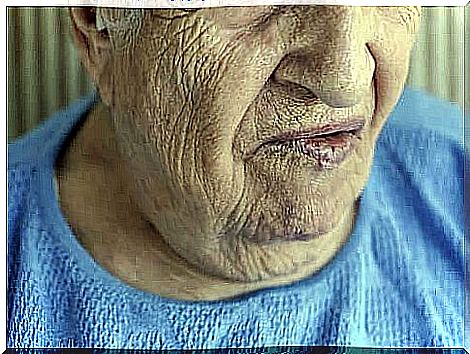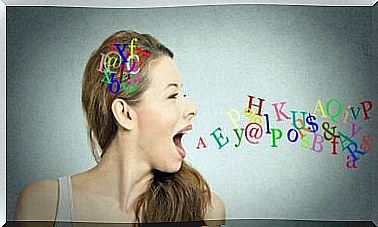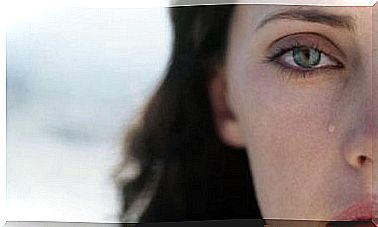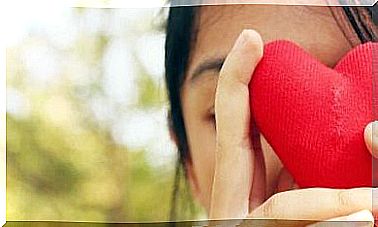Facial Paralysis: Causes And Treatments

Facial expressions are a fundamental part of appropriate social interactions. They are also very important for interpreting the feelings of others correctly. Consequently, people with facial paralysis may have problems with social interaction as well as emotional recognition.
Studies show that facial expressions are innate and universal patterns of behavior. Researchers have proven this by doing experiments that compare facial expressions to blind children and children with normal vision and with, among other things, transcultural studies.
Researchers found that facial expressions were very similar in different groups. In addition, the individuals had no problems recognizing facial expressions of people from other groups.
You express emotions and simulate special facial expressions that correspond to certain emotions by using the muscles in your face. Facial movements are controlled by two independent circuits. Whether what you want to express is real or false, determines which circuit your brain activates.

Emotional facial paralysis
This type of paralysis is caused by an injury to the isolated area, the white matter in the frontal lobe or thalamus and the left hemisphere of the brain. This system is associated with the physical architecture that is responsible for will-controlled movements in the facial muscles. It connects to the medulla oblongata and the caudal region to the cerebral bridge.
Damage to this system leads to the inability to express real feelings on the side of the body that is the opposite of the damage. In this case, it would be the right side of the face.
However, people with this type of paralysis are able to reproduce (or simulate) all kinds of facial expressions on both sides of the face.
Will-controlled paralysis of the face
Individuals with willful facial paralysis cannot move the facial muscles when trying to simulate emotions. The side of the face that is contralateral to the injury does not respond to the brain’s signal to give a specific facial expression.
When emotions are real, the facial muscles on both sides of the face respond normally. Individuals with will-controlled facial paralysis are not able to simulate a feeling that they do not actually feel.
Damage to the right hemisphere, primarily the motor cortical region, is what causes this damage. Specifically, the area corresponding to the face. Damage to the fibers that connect the frontal area to the facial muscle can also cause this problem (also in the right hemisphere).
A neuroimaging study showed that observation and imitation of emotional expressions trigger an increase in the activity of the frontal area of mirror neurons. It leads to more empathetic behavior and better relationships with other people.
In any case, it means that the ability to reproduce other people’s facial expressions contributes to emotional recognition, not that people with facial paralysis are completely unable to do so. It simply means that they may have more problems than most.
The role of facial expressions in emotional recognition
As you know, emotional expression allows you to communicate with the world around you. Yet this function only makes sense if other people are able to understand the emotional state and respond to it correctly.
The right hemisphere is more related to emotional recognition than the left hemisphere. As a result, people with injuries to the right hemisphere of the brain have difficulty with emotional recognition.
Several areas of the brain are involved in emotional recognition, such as the amygdala, forehead, mirror neurons, etc. However, we will focus on mirror neurons and the role that imitation plays in emotional recognition.
When you see another person’s emotional expression, your brain automatically, unconsciously and imperceptibly reproduces the emotions.
Seeing facial expressions in others activates your mirror neurons, and they allow you to mimic these expressions. The feedback that happens when you imitate a facial expression is what allows you to understand how other people feel and feel about them.
In addition to willful facial paralysis, there is another type of facial paralysis. This one in particular demonstrates the relationship between emotional expression and recognition. It’s called Moebius Syndrome. This paralysis also affects emotional facial expressions and emotional recognition.

How facial paralysis affects life
Facial expressions allow you to engage in non-verbal communication, which enriches the words you say.
Interpreting other people’s facial expressions also allows you to deduce their needs or desires. This often happens before you can find out about them through other channels. In other words, facial expressions make us the most intelligent beings on the social plane.
If you are unable to recognize the facial expressions of those around you, it can make relationships very difficult. Not only that, but the inability or difficulty in expressing what you feel properly is a challenge for everyone around you.
Fortunately, there are other means of communication available, even for people with facial paralysis. There are, of course, verbal language and alternative forms of non-verbal expression. Imitation and prosody can also help compensate for problems due to facial paralysis.









